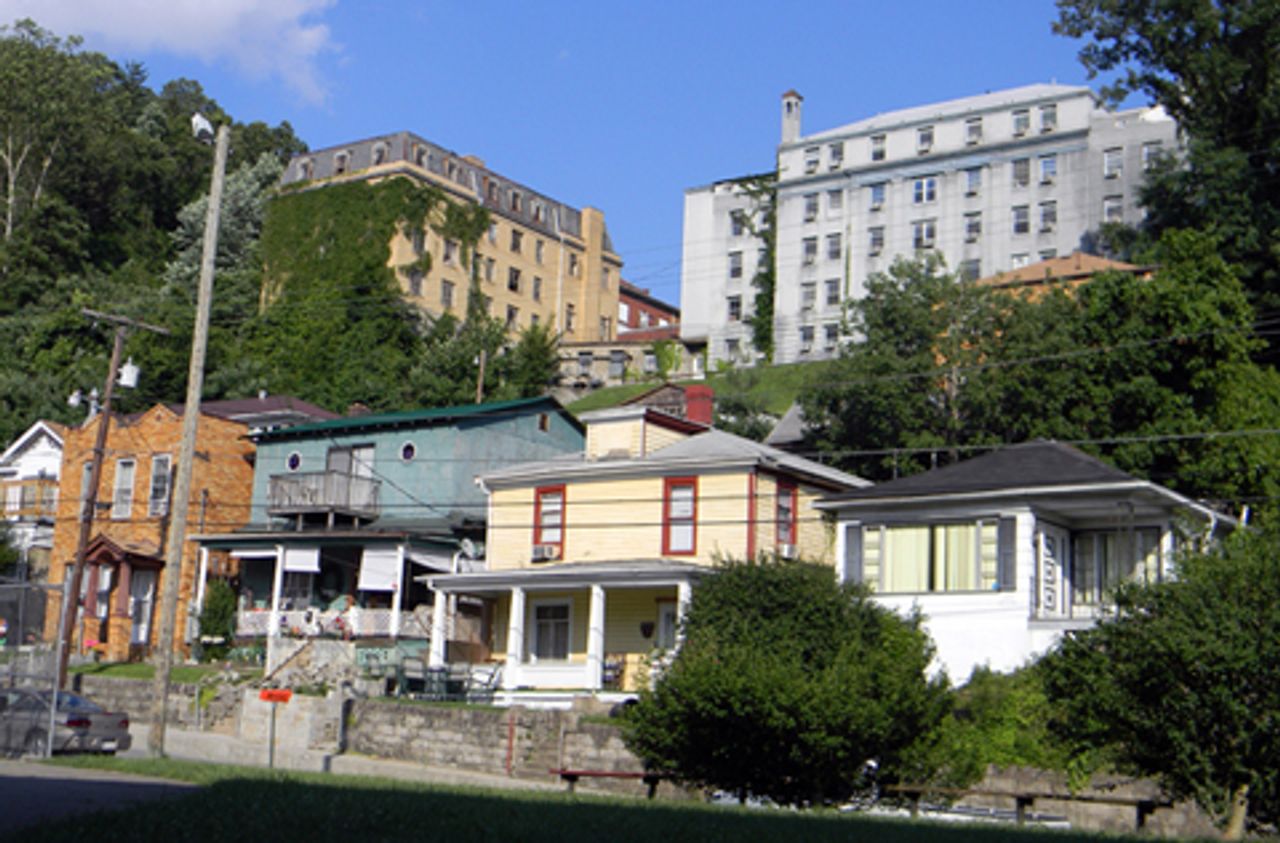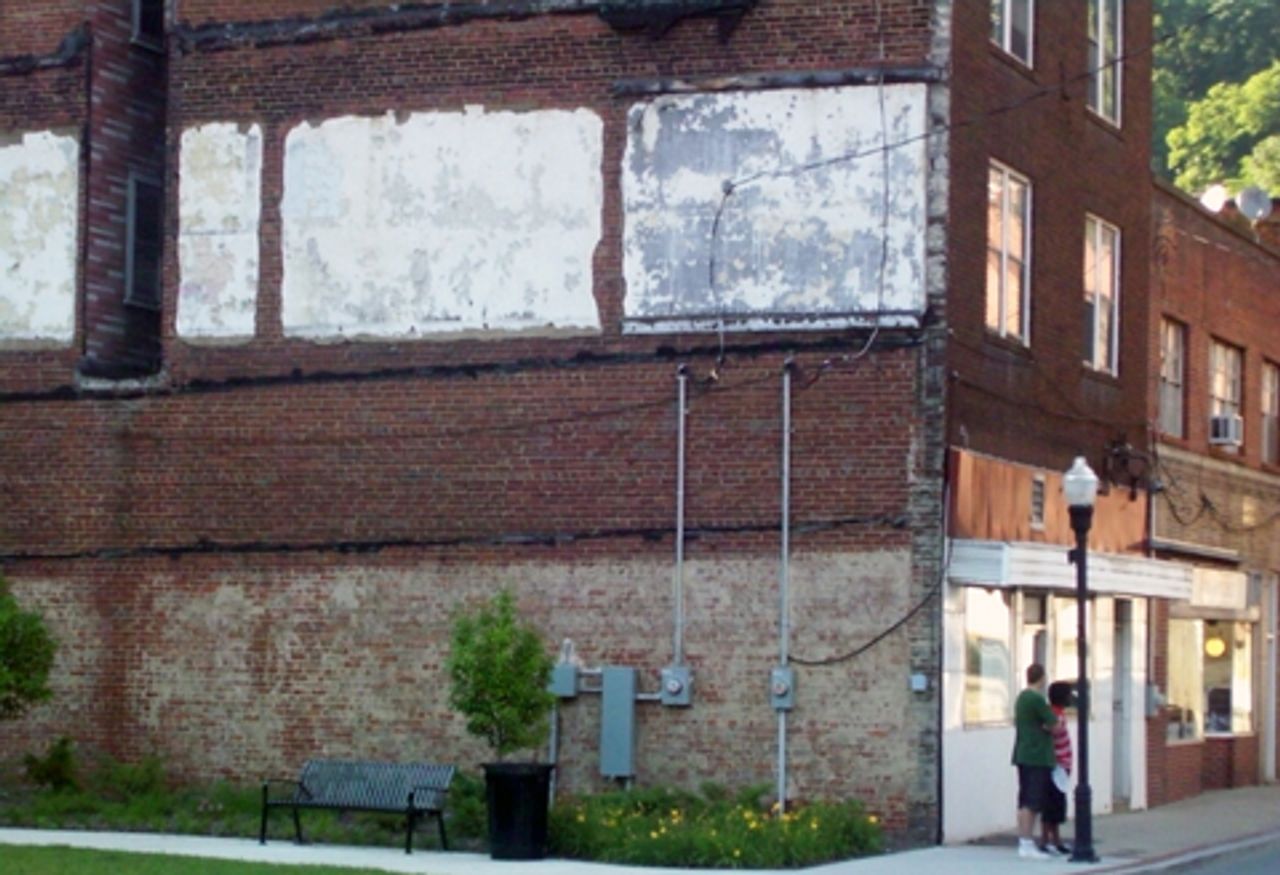This article is the second of a series on the history, economy, social and environmental conditions in the Appalachian region of the United States. Part 1 was published on July 22, part 3 on July 27, part 4 on July 30, and part 5 on August 3. World Socialist Web Site reporters recently visited the coalfields of southeastern Kentucky and southwestern West Virginia and interviewed residents on their conditions of life. Accompanying interviews and related material are posted in four parts here: 1 | 2 | 3 | 4 | 5.
 Old hospital in Williamson, West Virginia
Old hospital in Williamson, West VirginiaBy virtually every measure, the working class and poor in the United States confront a crisis in social infrastructure. In the coalfields region of eastern Kentucky and southwestern West Virginia, where most residents are poor, and access to health care and other basic services is limited, the levels of disease, drug addiction, and other ills are a stark expression of the inequality that exists throughout the country.
Statewide, poverty stands at 22 percent in Kentucky, and the official unemployment rate is 10.6 percent. In West Virginia, unemployment rose to 9.5 percent in March 2010 from 6.9 percent a year earlier; 19.1 percent of West Virginians live below the poverty line. In both states, the median annual income for households is $10,000 below the national median.
In April 2010, Kentucky had 776,000 people enrolled in the Food Stamp Program, an increase of 75,000 over the year before. West Virginia saw an increase of 40,000 over the same period, to 338,000 enrollees. In Kentucky, only households with no more than 130 percent of the poverty threshold are eligible. West Virginia determines eligibility on a strict measure of assets and earnings, with no enrollee allowed more than $2,000 in assets.
According to data from Kentucky Youth Advocates, in 2008 the families on food stamps in the state received an average $210 per month; most families run short by the end of the month, especially in areas where grocery stores are few, which generally makes food more expensive.
 Welch, West Virginia residents on McDowell Street, lined with boarded-up storefronts. Many towns in the coalfields have no grocery stores.
Welch, West Virginia residents on McDowell Street, lined with boarded-up storefronts. Many towns in the coalfields have no grocery stores.Currently some 790,000 Kentuckians are enrolled in Medicaid, including nearly one in every two children. Because of the economic crisis, the rate of applications has spiked, from 930 per month last year to 3,400 a month now. A Kaiser Family Foundation report released May 26 projected the Medicaid rolls in Kentucky could increase by 424,000 over the next several years.
At the same time that poverty and social need have grown, state legislatures have inflicted major cuts on public programs. The Kentucky budget approved on May 29 included budget cuts of 3.5 percent for many state agencies this year, with 4.5 percent cuts to follow next year. Cuts to public health and education funds have come down year after year in the state, which has staggered under billion-dollar budget deficits for the past decade.
Health spending is likely to plummet in 2011. The budget as it was passed in May included money to be provided by the federal government in the form of Medicaid matching funds, which were blocked in the US Senate. By the end of the year, the state faces an additional shortfall of $238 million in its health care budget.
Another area facing cuts is the Department for Community Based Services, which provides child protection services and processes food stamp applications. The department’s funding is slated to be cut by 8.5 percent. Reflecting the social instability wrought by grinding poverty and insufficient family services, Kentucky is currently the worst among the 50 states for the rate of child death from abuse and neglect. The state’s juvenile drug court program, which provides counseling and rehabilitation to minors, has also been eliminated.
West Virginia is one of the few states that did not record a deficit last year, because of its long-running program of austerity and paltry social outlays. In fact, the rating agency Moody’s Investment Services upgraded the state’s bond rating to AA1 on July 9, praising its “fiscal conservatism and consistent fund balances.” For the coming fiscal year, the legislature passed a budget with no spending increases in any services, in spite of the increasing need among the population.
The coalfields region of the two states is particularly exposed to budget cuts. Poor people from the mountains often have to travel hours away, to Lexington, Charleston, or other cities, to see a doctor who will accept Medicaid reimbursement. Others get treatment through charities, county health departments, and expensive hospital emergency rooms.
The more complicated one’s conditions are, residents explained to the World Socialist Web Site, the scarcer are the specialists and resources required to treat them. Public health clinics in many towns are understaffed and under-stocked, or lack the budget to operate regular office hours.
The lack of other basic infrastructure, including transportation and major roadways, further contributes to the difficulties of accessing care. Residents explained that in certain areas, helicopter evacuations were the only means of survival for accident victims.
Kentucky suffers a major doctor shortage, according to an analysis by the Lexington Herald Leader published May 27. The paper found that for every 100,000 people in the state, there are 213.5 physicians, compared to the national average of 267.9 doctors per 100,000 people. Just to reach the national average, about 2,200 more physicians would be needed to serve the state.
For the Medicaid-enrolled population, the shortage of doctors is particularly sharp. Many doctors, dentists, and clinics will not accept Medicaid patients because of low and late reimbursements for their services and an antiquated system of paperwork involved in filing with the state.
Dentists are especially scant in the mountains, exacerbating poor dental health rates. According to a 2008 study published in the Journal of the American Dental Association, adult residents in the coalfield region of Appalachia suffered “a high rate of complete or partial edentulism [toothlessness], an infrequent orthodontic treatment, great unmet orthodontic need and less demand for orthodontic care than was suggested by their clinically determined need.”
Poor people, who often have the poorest nutrition and a higher incidence of tobacco use, are at a far higher risk of losing their teeth or developing life-threatening abscesses, infections, and cancers of the mouth and throat. Some of the poorest families receive dental care only through traveling dentists providing basic screenings as charity.
Medicaid reimbursements for dentists have not risen since the early 1990s, while the cost of care has spiked. In West Virginia, Medicaid reimbursements haven’t been increased since 1991, and the state cut its rates by a third in 1994. Dentists dropped out of the program en masse because they could not afford to treat poor patients. An October 2009 report by the Kaiser Family Foundation and West Virginia Public Broadcasting identified a single dental practice in the tiny coalfield town of Oceana that treated 12,000 patients.
Further contributing to the high incidence of toothlessness in the region are the limited dental services that are covered by Medicaid for adults. In West Virginia, preventive care is not regularly included, even for infants and toddlers.
For adults over 19 years of age, reimbursed care is largely limited to emergency tooth extractions. Consequently, some patients who may be ineligible for fillings, but eligible for dentures, are compelled to have all their teeth pulled in order to quell excruciating pain. Patients who have their teeth pulled are sometimes forced to wait for their dentures to arrive several weeks later by mail, during which time they are unable to eat solid food, residents said. If their dentures do not fit properly, patients may have to wait weeks more for a refitting.
Without regular medical examinations and preventive care, residents are more likely to develop chronic or fatal conditions. Cancer death rates are significantly higher in rural Appalachia, according to data from the federal Centers for Disease Control. Cervical, colorectal, and lung cancers were all far higher—mountain counties in Kentucky recorded 196.6 cancer deaths per 100,000 population from 1994-1998, as compared to 166.7 per 100,000 nationally.
Mental distress and drug addiction are also on the rise. A 2008 study by the federal Appalachian Regional Commission found high prevalence rates for both serious psychological distress (16.1 percent) and major depressive episodes (10.6 percent) in the coalfields population, as well as painkiller addiction that is more than twice the national rate.
Extreme poverty gives rise to a myriad of other health problems. For example, the CDC published a study in November 2009 indicating distinct geographic patterns across the United States for the prevalence of diabetes and obesity. The study revealed high rates of the conditions in the poorest areas of the country, particularly in the Appalachian coalfields, where 30.9 percent of the population was obese, and 10.6 percent had diabetes.
In no small part, these conditions are due to “food deserts” that exist in the regions. Many distressed urban centers in the US, such as Detroit, Baltimore, and East St. Louis, have similar problems. When industry shuts down, businesses including grocery stores close up shop and leave the area. A shortage of grocery stores carrying fresh fruits and lean meats require residents, especially those who use food stamps and may have other problems of economic origin, such as lack of transportation, to depend upon convenience stores, gas stations, or discount stores, where primarily high-sodium and fatty foods are sold.
Residents in West Virginia border towns of Matewan and Williamson told the World Socialist Web Site that because of the differences in the Kentucky business tax code, most of the shops closed their doors and relocated across the state line. This left thousands of residents without easy access to healthy foods in towns with no public transportation systems.
The erosion of basic social infrastructure is a feature of widening inequality in the United States. The coal industry continues to reap billions of dollars each year from central Appalachia, paying less in taxes than it receives from the state, as the workforce is decimated, social spending is eliminated, and living standards collapse.
This process has contributed to the stagnation of the life expectancy in the region. Since the early 1980s, the coalfields have experienced a “reversal in fortunes” in mortality rates, according to a 2008 study co-authored by researchers from Harvard and the universities of California and Washington. In the worst-off counties, researchers found life expectancy either stagnated or dropped by 4 percent for men and 19 percent for women between 1983 and 1999. This marked the end of rising life expectancies among the poor—a trend that represented huge gains in medical technology, as well as the historic gains of the civil rights era and the “war on poverty” measures initiated in the 1960s in the coalfields region.
Since the 1980s, inequality has exploded, decent-paying jobs have been destroyed, and welfare has been dismantled. Consequently, both male and female life expectancies had a statistically significant decline in poor counties, averaging a loss of 1.3 years.
To be continued
The social crisis in Appalachia: Part 1 | Part 2 | Part 3 | Part 4 | Part 5
Interviews and related material: 1 | 2 | 3 | 4 | 5
Subscribe to the IWA-RFC Newsletter
Get email updates on workers’ struggles and a global perspective from the International Workers Alliance of Rank-and-File Committees.
